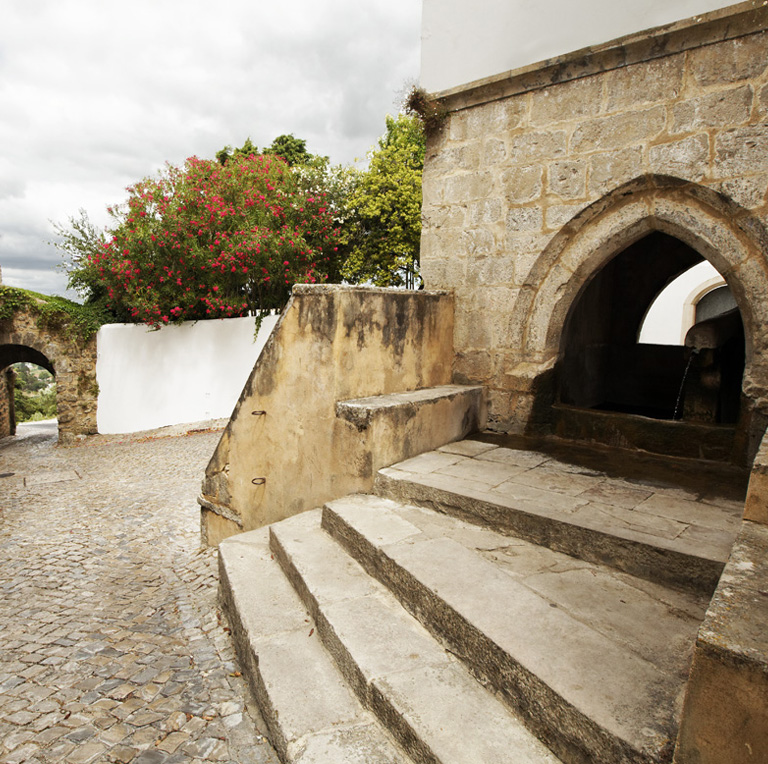Medieval Village
Ourém

The medieval town of Ourém is located on a hill, marking the hinge between two landscapes: one of limestone and mountains to the south, and a landscape of sandstone, alluvial fans and streams to the north.
At the top of the hill rests the castle, in a strategic position to dominate the surrounding territory.
This walled town, occupied by humans since prehistoric times, developed mainly in the medieval period along two axes: a military axis and a religious axis. After its reconquest from the Moors, the first king of Portugal donated it to his daughter D. Teresa who, in 1180, gave it its first charter and coat of arms, giving rise to the Ourém coat of arms.
As the town became the head of the county, the third count, D. Nuno Álvares Pereira, and, above all, the fourth count, D. Afonso (his grandson and the grandson of King João I), gave it great prominence. This 15th century illustrious man was responsible for the construction and consolidation of the town’s main monuments.
There he established the Collegiate Church and built the Palace of the Counts of Ourém to house his residence. This national monument, consisting of a central tower with two turrets, shows the transnationalism of Ourém and the avant-garde vision of King Afonso, with influences from North African and Italian architecture. The 4th Count restored the castle of Ourém, made up of three towers, the enclosure of which houses a cistern that holds water all year round inside, and the tower of D. Mécia, where the queen is said to have been held. She also built the Gothic fountain, a fine example of the Gothic movement in Portugal, on which the French invasions left marks of their passage through Ourém by decapitating the head of the eagle that is part of the coat of arms.
On the first floor of the old collegiate church is the crypt. In the center of the vaulted chapel is the tomb of King Afonso, with his coat of arms at the head and two cranes at his feet. The count’s face stands out in the lying statue, considered one of the best sculpted in Portugal before the Renaissance.
Praça do Pelourinho, with its pillory, the old town hall and the old Ourém prisons nearby, evokes the political and legal-administrative power of this town, which was once the county seat. The old town hall houses the municipal gallery and the tourist office, which promotes the arts and local culture. The Ucharia do Conde is housed in the old jails, where local cuisine is tasted and sold, particularly medieval wine from Ourém.
The medieval village is enriched by the streets with medieval features, which cut through the white houses, the traditional shops and the people who live there.
Out of doors, the visit stretches along the slopes of the hill, down the historic Carapita sidewalk, stopping at the horse fountain and the Dead Woman’s sidewalk.
